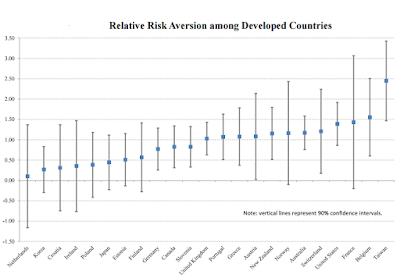What a nicer way to end this blog then by showing the most relevant results from our paper titled: "The Impact of CEO Characteristics on Capital Structure"
Our results section gave us they main findings regarding descriptive statistics, the correlation between the independent variables and capital structure, as well as the independent variables among themselves, the distribution of capital structure, the relationships between the beta coefficients of the independent variables and the capital structure and the goodness of fit of the regression.
Our main focus of the paper was to study the capital structure as the dependent variable as a function of many independent variables, the most studied being the age of the CEO.
After taking into consideration the log form of the components that make the capital structure (Total Debt/Total Assets), we obtain 60% of the firms of our sample with gearing values between 2.50-2.75. Outliers above 3 and below 1.75 were almost inexistent.
Regarding the age of the CEO's, 45% more or less is represented by the age group between 50-59. Not many CEO's exist in our sample below the age of 40.
While having a glance at the correlation figures between the variables, it is important to mention that all the independent variables are positively correlated with the capital structure. The highest figures are 0.50 for the market capitalization, as a measure of size, and the age of the company at 0.24. Variables like age of the CEO and market capitalization are negatively correlated but not significant.
While conducting normality tests like the Kolmogorov‐Smirnov and the Shapiro‐Wilk tests, we get statistics like 0.008 and 0.98 respectively, showing that the capital structure is not normally distributed.
When comparing the beta coefficients of the variables with capital structure, we see that all variables except profit margin are positively correlated. Market capitalization and the industry of the company are significant at a 1% level.
Finally, our regression gives us an R-squared of 0.272. This means that our independent variables explain 27.2% of the capital structure of our sample.
As a conclusion, we would like to mention that the findings we mentioned along the paper and stated here are mostly in line with the literature regarding this topic.



